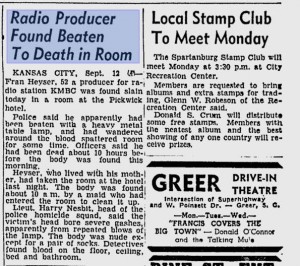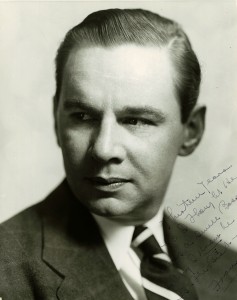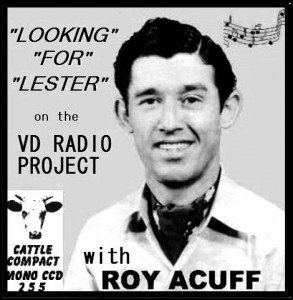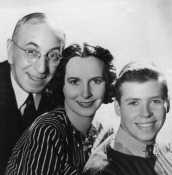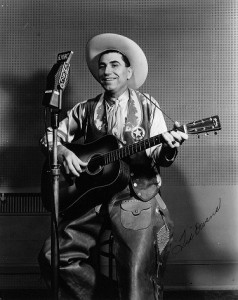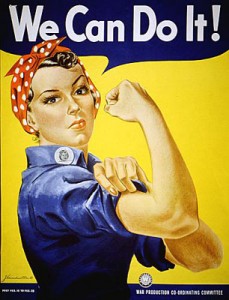It’s probably 16 inches wide, and you hold it carefully by the edges. It could be made of glass or aluminum, coated with black cellulose nitrate. If you’re lucky the coating hasn’t started flaking off yet. Alternatively it might be made of vinyl, like an LP, but bigger. It plays at 33 1/3 RPM, holds 15 minutes of recorded sound, and was a key tool in the development of syndicated radio programming in the United States. We’re talking about transcription discs.
[ngg_images source=”galleries” container_ids=”2″ display_type=”photocrati-nextgen_basic_imagebrowser” ajax_pagination=”1″ order_by=”sortorder” order_direction=”ASC” returns=”included” maximum_entity_count=”500″]
In the 1920s, radio stations needed a way to replicate and share programming consistently. They weren’t allowed to play commercially released records on-air because musician’s unions believed that hurt record sales. So radio content had to come from somewhere else. Live broadcast was inconsistent, time consuming, and expensive. Not every radio station could afford to have its own in-house musical groups, but all stations wanted to attract more listeners. At this time the first radio networks were beginning to form. The National Broadcasting Company (NBC) was created in 1926, and Columbia Broadcasting System (CBS) was formed in 1927. As these networks made more programming and acquired more satellite stations, they needed a way to distribute programming. Larger radio stations were creating programming of their own that they wanted to share with the networks. In short, there was a huge market for pre-recorded radio programming, but distribution of content was still a major hurdle. Transcription discs were the solution.
By the 1930s, transcription disc recorders had become ubiquitous at larger radio stations. Program producers were able to pre-record a program, make copies, and distribute it to other radio stations for future broadcast. This meant that stations in networks could all get the same programs. Individual stations could also add out-of-network programming to their repertoire by purchasing them from distributors. A station could also record its own unique local program using transcription discs, and then re-use it later. As a result, small stations could avoid the expense of live programs. Bigger stations and networks could get their shows to a wider audience. This meant listeners in Boston, Kansas City, and San Francisco could hear the same program at the same time. The ability share programming is a big reason why radio contributed to the growth of popular culture across America. To paraphrase Marr Sound Archives director Chuck Haddix, “radio was like the internet” because it brought people closer through information sharing. Everybody got to hear the same radio programs and news broadcasts, giving people similar cultural and political knowledge. We take this for granted today. Imagine for a moment a conversation with someone from two or three states away. They hadn’t heard Adele’s latest song or weren’t able to listen to that Ted Talk that enthralled you. Of course the opposite would be true as well. Its 75 degrees here in Kansas City. What snow storm in Ohio? That political protest in Washington that they went to? You had no idea until weeks later. Certainly newspapers allowed content-sharing, but radio was a huge leap forward, and it’s largely thanks to the humble transcription disc. One of the big 1930s radio stations that made a lot of transcription discs was KMBC here in Kansas City. Many of these discs are now held in the Marr Sound Archives.
KMBC joined CBS in 1928 as the 16th affiliated station. In 1930 station moved to the eleventh floor of the Pickwick Hotel. Under the direction of Arthur B. Church, KMBC became a model for other stations. Church and KMBC produced a wide variety of syndicated shows which were recorded on transcription discs and then distributed. One of these programs was the Texas Rangers. Another example from the KMBC collection that highlights the importance of transcription discs is a recording of one of Franklin D. Roosevelt’s “fireside chats.” The recording can be heard below. It was made by CBS at the White House on May 2, 1943. It was then presumably broadcast by all CBS network stations, including KMBC. FDR could not have reached the entire country without transcription disc technology.
Sources
Museum of Broadcast Communications. Encyclopedia of Radio. Edited by Christopher Sterling. Vol. 3. London: Fitzroy Dearborn, 2004.

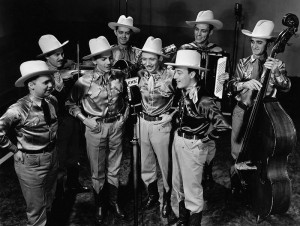
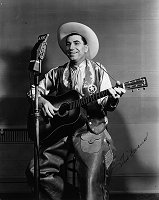
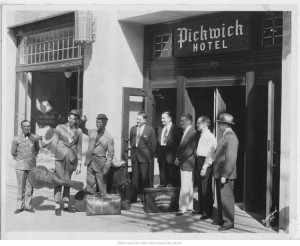
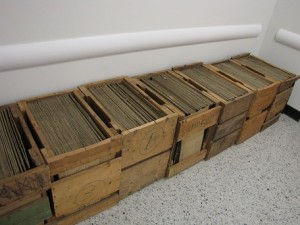
 David Basse is one of Kansas City’s best-known contemporary jazz artists. During his tenure broadcasting at Kansas Public Radio in Lawrence, he met Nan Hill, a devout listener and dynamo with unfettered knowledge of the Blues and Jazz Scene. She would come to write the radio host often. She composed her letters as she listened to Basse’s show on the radio and critique his programs as she felt she needed to. This Jazz Aficionada took her job as Mr. Basse’s appointed co-pilot quite seriously. Never could this radio host have imagined, while spreading inspiration with the power of music throughout the airwaves, that he in turn would be galvanized by the passion of this dear soul reaching back to him. Following is a moving tribute by David honoring Nan after her passing.
David Basse is one of Kansas City’s best-known contemporary jazz artists. During his tenure broadcasting at Kansas Public Radio in Lawrence, he met Nan Hill, a devout listener and dynamo with unfettered knowledge of the Blues and Jazz Scene. She would come to write the radio host often. She composed her letters as she listened to Basse’s show on the radio and critique his programs as she felt she needed to. This Jazz Aficionada took her job as Mr. Basse’s appointed co-pilot quite seriously. Never could this radio host have imagined, while spreading inspiration with the power of music throughout the airwaves, that he in turn would be galvanized by the passion of this dear soul reaching back to him. Following is a moving tribute by David honoring Nan after her passing.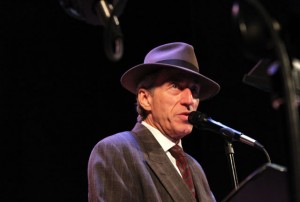 reference to the John Coltrane composition Mr. P.C. The song was written for Paul Chambers, Trane’s long-time bassist, and I realized last night how much Chambers is the star of that piece, driving everyone in the band to perform fabulous solos without being featured himself. That’s a jazz thing. That is exactly what Nan did each week with her solid devotion to me and my colleagues: she pushed the music along, influencing us without getting in the way. Nan fell by the station for a visit once when her granddaughter was in town from California. Nan was dressed like Norma Desmond, with black sunglasses and a brocade wrap around her head. I know she was training her granddaughter to listen to jazz by insisting on the outing. The two of them sat quietly in the studio and watched me program the entire afternoon. From then on, the weekly letters not only included stories from Nan’s active memory and tales of her daily activities, Nan also kept me apprised of the goings on of her beloved granddaughter. It was the hippest. After several years of letters, I decided to call her. I invited her to attend a few jazz shows, the very special ones I offered to drive to Lawrence to pick her up and return her when she was too tired to hang. Once, she actually took me up on the offer, for a holiday jazz event that KPR sponsored at Liberty Hall. Nan reserved a room across the street at the Eldridge Hotel to be close to a bed if she needed to lie down. We talked and wrote back and forth several times while making plans. When the big day came, a serious blizzard hit Lawrence right at the end of my 4pm shift. Nan couldn’t make the scene. She had to hear the gig on the radio, listening and commenting on every nuance of the party – both times it aired!
reference to the John Coltrane composition Mr. P.C. The song was written for Paul Chambers, Trane’s long-time bassist, and I realized last night how much Chambers is the star of that piece, driving everyone in the band to perform fabulous solos without being featured himself. That’s a jazz thing. That is exactly what Nan did each week with her solid devotion to me and my colleagues: she pushed the music along, influencing us without getting in the way. Nan fell by the station for a visit once when her granddaughter was in town from California. Nan was dressed like Norma Desmond, with black sunglasses and a brocade wrap around her head. I know she was training her granddaughter to listen to jazz by insisting on the outing. The two of them sat quietly in the studio and watched me program the entire afternoon. From then on, the weekly letters not only included stories from Nan’s active memory and tales of her daily activities, Nan also kept me apprised of the goings on of her beloved granddaughter. It was the hippest. After several years of letters, I decided to call her. I invited her to attend a few jazz shows, the very special ones I offered to drive to Lawrence to pick her up and return her when she was too tired to hang. Once, she actually took me up on the offer, for a holiday jazz event that KPR sponsored at Liberty Hall. Nan reserved a room across the street at the Eldridge Hotel to be close to a bed if she needed to lie down. We talked and wrote back and forth several times while making plans. When the big day came, a serious blizzard hit Lawrence right at the end of my 4pm shift. Nan couldn’t make the scene. She had to hear the gig on the radio, listening and commenting on every nuance of the party – both times it aired!